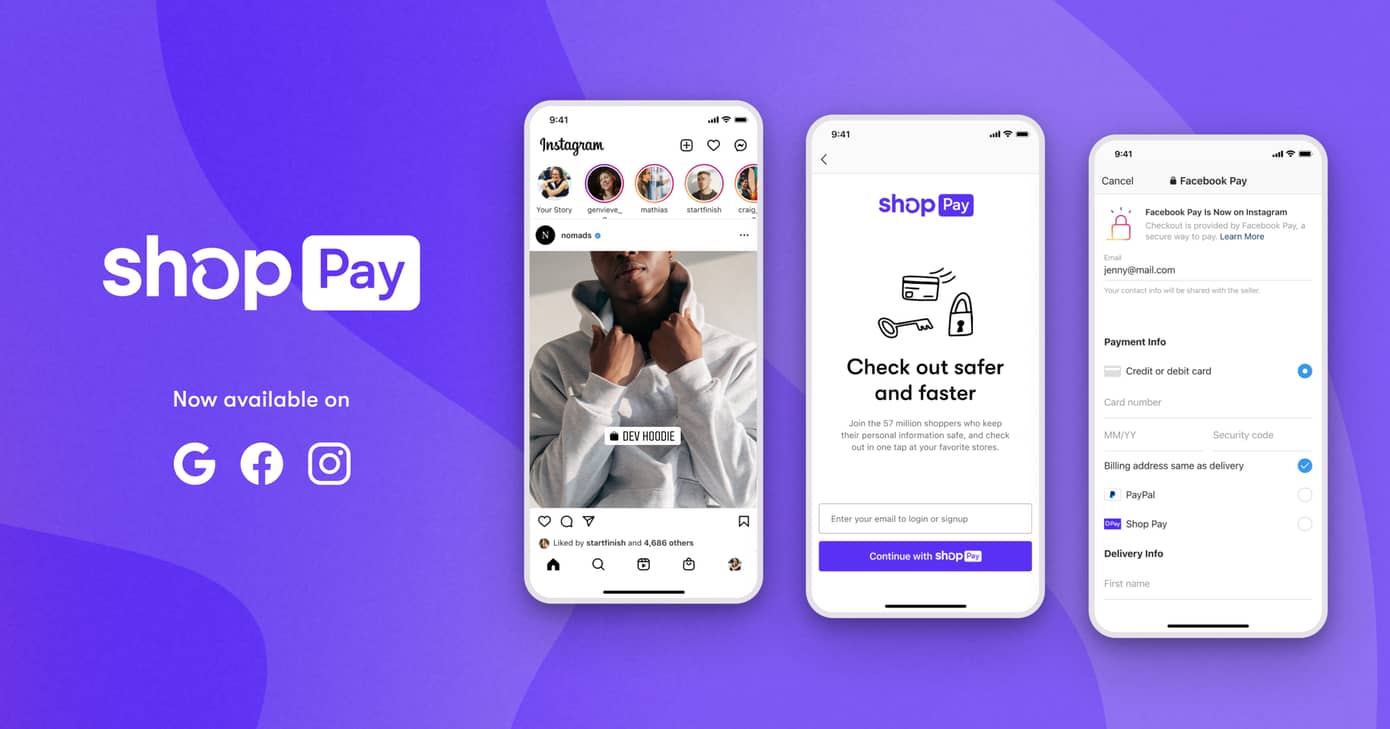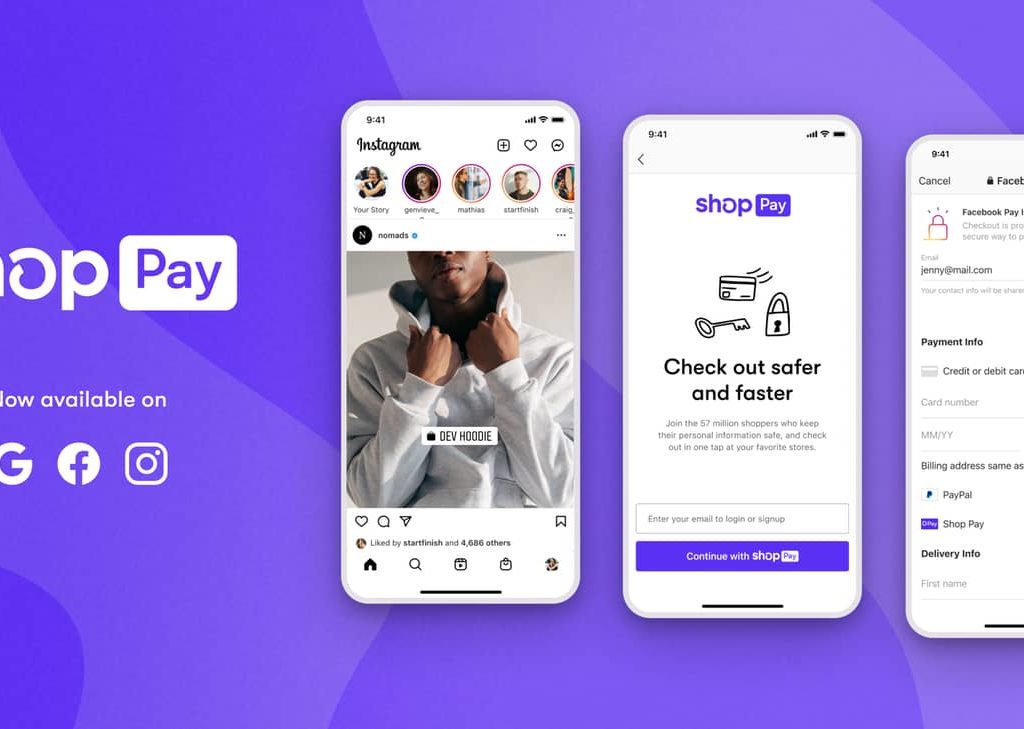Shopify has extended its tentacles further into the SMB world. The eCommerce platform announced this week that it will offer its one-click checkout service Shop Pay to merchants that sell on Facebook or Google’s respective marketplaces. This appears to be a customer acquisition move to expand its addressable market.
But before diving into strategic drivers for Shopify, what are the specifics of this latest move… and what is Shop Pay? Starting with the latter, Shop Pay is Shopify’s instant checkout feature that makes it easier for a merchant’s customers to check out. It essentially streamlines the process and lessens required fields.
It does this by remembering and encrypting customer information so they can be authenticated on the fly — thus enabling one-tap transactions. Think of it like Amazon’s one-click checkout but democratized for smaller merchants. It boasts 70 percent faster checkout and a 1.72x conversion rate versus benchmarks.
Amazon Scale
As for the latest offering, Shop Pay is now available for the first time to non-Shopify merchants. The “non-Shopify” part is key, as this marks the first Shopify product that’s offered to all merchants. It previously offered Shop Pay to merchants selling on Facebook and Google, but only those who had Shopify accounts.
As background, Shopify offers its merchants two main sources of value: eCommerce/Store functionality and distribution/exposure. The former is the core offering but the latter continues to develop through partners like Walmart, Google and Facebook. Shopify stores are amplified on these marketplaces.
For example, as we examined last month, Shopify recently partnered with Google to offer its 1.7 million merchants additional distribution through Google channels like Search, Maps, Images, Lens and YouTube. With all of the above partnerships, the goal is to offer Shopify merchants a high-scale alternative to Amazon.
Acquisition Play
That brings us back to the strategic drivers for its latest move. This is clearly a customer acquisition play through a classic freemium format. By offering Shop Pay free, it widens its own sales funnel by exposing itself to more non-Shopify merchants. The hope is that some percentage of those convert to Shopify merchants.
And it has chosen the right venues. The company reports that 1.8 billion people log into Facebook every day and a billion shopping sessions take place across Google properties. As far widening the top of the funnel –which is Shopify’s intention as noted — it doesn’t get much wider than that (outside of Amazon).
Meanwhile, Shop Pay has facilitated more than $24 billion in transactions. That could inflect given Google and Facebook’s scale. The question is if it results in Shopify’s intended merchant acquisition. We’ll watch closely for signs of that merchant growth, not to mention Shopify’s continued eCommerce market-share blitz.
As for rollout timeline, Shop Pay will be activated for U.S.-based Facebook merchants in the “coming months,” while Google merchants will follow by late 2021.



